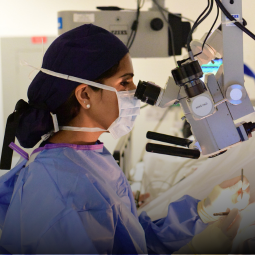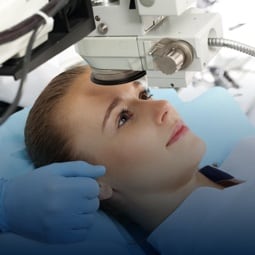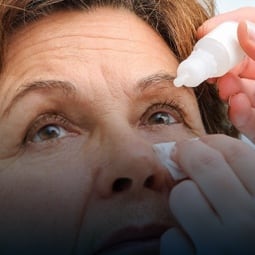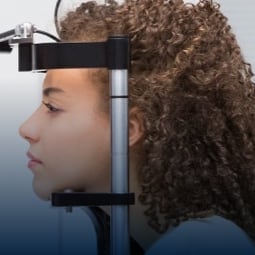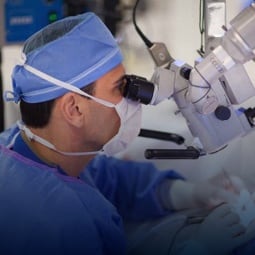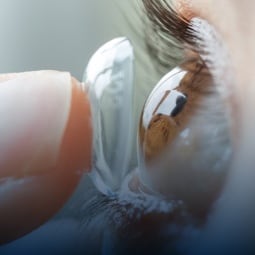
We Can Help Protect Your Vision
Glaucoma is a disease that requires early treatment to prevent further vision loss. At Center For Sight, our eye care physicians can identify and treat glaucoma with advanced technologies, including medication, glaucoma surgery, and other treatments.
Dr. Elizabeth Davis is a board certified ophthalmologist who is fellowship-trained cataract, refractive, and corneal surgeon. She received her Medical Degree from John Hopkins University of Medicine graduating first in her class.
Dr. Davis also completed a received a HEED Ophthalmic Foundation Scholarship to complete subspecialty fellowship training in cornea, external disease, refractive surgery, and glaucoma.
Dr. Joshua W. Kim is a board certified ophthalmologist who is fellowship trained at the premier New York Eye & Ear Infirmary in New York City for a distinguished fellowship specializing in glaucoma.
Many types of glaucoma exist, but our team can offer you the care you need. Visit one of our locations for exceptional eye care and glaucoma management. Book an appointment with us today to understand how we can help protect your vision.


What Is Glaucoma?
Glaucoma is a disease that occurs when there is an increase in the fluid pressure within the eye. If left untreated, this pressure can cause irreversible damage to the optic nerve. Glaucoma is one of the leading causes of blindness today.
In certain types of glaucoma, fluid does not drain properly, causing the pressure inside the eye to rise. Pressure build-up can damage the optic nerve and lead to vision loss. The most common type is open-angle glaucoma, but we treat patients with angle-closure glaucoma and normal-tension glaucoma as well.
Know If You’re At Risk
Approximately 3 million Americans have glaucoma, placing them at risk of severe vision loss. Unfortunately, many people do not realize they have glaucoma because it can progress with no visible symptoms in its early stages.
However, your eye care physician can diagnose glaucoma early during a comprehensive eye exam. We recommend regular eye exams for everyone over age 40.
While anyone can develop glaucoma, some people have a higher risk. These factors include:
- Age
- Certain medical conditions
- Family history
- Previous eye injury
- Extreme nearsightedness or farsightedness

Treating Glaucoma
Center For Sight is a leader in bringing the latest technologies to our patients. We can offer several treatments for glaucoma and recommend the most effective option to control eye pressure and prevent vision loss.
Our available treatments include:
Medications
A variety of eye drops and oral medications exist to control glaucoma—your doctor can recommend different medications based on your needs.
Laser Therapy Selective Laser Trabeculoplasty (SLT)
SLT uses short energy pulses to reduce intraocular pressure for patients with open-angle glaucoma.
Minimally-invasive glaucoma surgery
Minimally-invasive glaucoma surgery involves placing a stent to help bypass normal fluid drainage, lowering eye pressure.
Trabeculectomy
Trabeculectomy is a type of glaucoma surgery used to create a new pathway for fluid to drain inside of the eye.
Tube implants
Tube implants are silicone tubes implanted into the eye to assist in fluid drainage to keep eye pressure down.
Catch Glaucoma Before It Worsens
Without treatment, glaucoma can lead to severe vision loss and blindness. With an early diagnosis, our team at Center For Sight can help preserve and protect your vision. Contact us for an eye exam, so we can detect glaucoma before it worsens.

Our Locations

News
What Is a Corneal Abrasion? Signs, Causes, and How to Treat It
Eye CareIf it feels like sand is stuck in your eye and blinking makes it worse, you may have a corneal abrasion – a scratched cornea on the clear surface at the front of the eye. People sometimes call it a torn cornea, but most injuries are shallow scratches of the top layer, not a full-thickness […]
Read More… from What Is a Corneal Abrasion? Signs, Causes, and How to Treat It
How Long Does a Facelift Last? Factors That Shape Your Results
Faces by FezzaWhat a Facelift Does and How Longevity Works A surgical facelift procedure lifts and repositions deeper facial tissues while smoothing lax skin. Results last because underlying support layers are addressed, not only the surface. Aging continues over time, yet most patients see a meaningful reset that looks natural as the face settles. The goal is […]
Read More… from How Long Does a Facelift Last? Factors That Shape Your Results
How Botox Works: The Science Behind the Smooth
Cataract Surgery, Eye CareUnderstanding how Botox works starts with understanding nerve signaling. Tiny, targeted amounts of botulinum toxin type A go into specific facial muscles to quiet the messages that trigger contraction. When the pull eases, the skin over those muscles rests and the most active creases soften. Movement remains, but the sharp peaks of expression lines are […]
Read More… from How Botox Works: The Science Behind the Smooth
What Is a Corneal Abrasion? Signs, Causes, and How to Treat It

If it feels like sand is stuck in your eye and blinking makes it worse, you may have a corneal abrasion – a scratched cornea on the clear surface at the front of the eye. People sometimes call it a torn cornea, but most injuries are shallow scratches of the top layer, not a full-thickness […]
Read More… from What Is a Corneal Abrasion? Signs, Causes, and How to Treat It
How Long Does a Facelift Last? Factors That Shape Your Results

What a Facelift Does and How Longevity Works A surgical facelift procedure lifts and repositions deeper facial tissues while smoothing lax skin. Results last because underlying support layers are addressed, not only the surface. Aging continues over time, yet most patients see a meaningful reset that looks natural as the face settles. The goal is […]
Read More… from How Long Does a Facelift Last? Factors That Shape Your Results
How Botox Works: The Science Behind the Smooth

Understanding how Botox works starts with understanding nerve signaling. Tiny, targeted amounts of botulinum toxin type A go into specific facial muscles to quiet the messages that trigger contraction. When the pull eases, the skin over those muscles rests and the most active creases soften. Movement remains, but the sharp peaks of expression lines are […]
Read More… from How Botox Works: The Science Behind the Smooth
Check Us Out On Social.


We are a proud partner of US Eye, a leading group of patient-centric, vertically integrated multi-specialty physician practices providing patients with care in ophthalmology, optometry, dermatology and cosmetic facial surgery.




